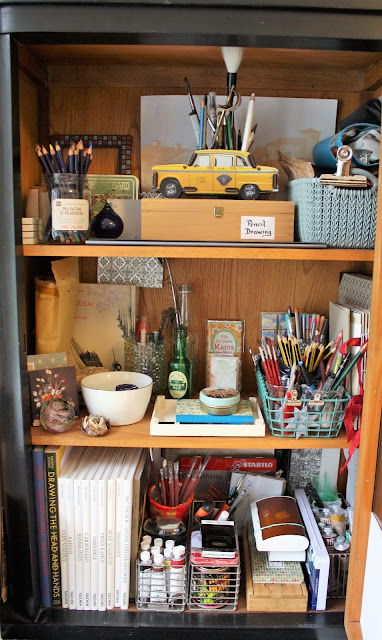How to paint an amaryllis in Watercolor- adding detail in layers
Watercolor is a medium that can really go in two main directions- either it is all over the place, colors flowing into one another as patterns and subjects are suggested, or it is tightly painted and resembles a realistic, colored pencil illustration. Although the first method can have a wonderful effect this post will focus on the second one.
In order to tighten up a watercolor illustration, layering is used. The first layer is loosely painted, taking care to leave the highlighted areas white. Often this first wash, a watery layer of paint with lower amounts of pigment, is painted over a preliminary pencil sketch. In applying it the important things to observe is that it doesn't flow out of the outline of the drawing. Internal divisions are less important, in fact, a little blending generally creates a pleasing color gradient.
Layers are added, often wet into damp, meaning that the paper is still damp when the new paint is being added, and depth is created by the use of shadow and contrast. Achieving the right amount of contrast can mean the difference between a visually exciting picture and one which seems flat and dull.
Once the basic colors are in, I start adding the detail, emphasizing the shadows and trying to create more three dimentionality to the subject.
When there are different sections of a picture with vastly different colors or textures I generally paint them one at a time- here I lay down the base laters for the wax coated flower bulb, then moved on to the flower itself, and finally moved back to the wax to add its detail.
Once the illustration is as 3D and as realistic as desired, I take a very fine brush and, using very little water, I add in all the fine detail, in this case, the veins in the amaryllis stalks and buds as well as the colored wax decoration.
I have found that in order to make an illustration more cohesive it is helpful to make sure that the colors are balanced. In this case, the bottom of the illustration is black and magenta whereas the top is yellow and green. As a way of softening this division, I took a bit of magenta and added it to the shadows of stalks. I also added a yellow-based brown to the shadowy areas of the bulb. The eye can now travel down the illustration without a disjointed impression.
I have learned that when I feel I am finished with a piece I usually have to go back in and darken the darks to up the contrast. It feels scary to do it but I always like it better once it is done.
This layering process works whether you are working in color or monochrome.
Well, that is it for today. Do you work in layers or move paint around on a still damp surface? If you do both which do you prefer? If you don't paint, I would love to know which style appeals to you more. Let me know in the comments.
To get posts as soon as they are published click on the subscribe button at the top of the page or Follow by clicking on the follow button.



















Comments
Post a Comment